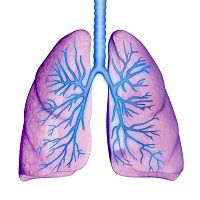Chronic Obstructive Pulmonary Disease Ruled Out for Aboriginal Australian Population
On average, Aboriginal Australians have a lower forced vital lung capacity compared to the rest of the population, a phenomenon that was formerly attributed to COPD, according to a study published in Respirology.

On average, Aboriginal Australians have a lower forced vital lung capacity compared to the rest of the population, a phenomenon that was formerly attributed to COPD, according to a study published in Respirology.
Researchers from various health and research centers in Australia observed data from 704 Aboriginal Australian patients in order to measure the true prevalence of post bronchodilator airflow obstruction and forced viral lung capacity reduction. Forced viral lung capacity is the amount of air that can be forcibly exhaled from the lungs after a person takes the deepest breath they possibly can. The participants were aged 40 years and were assessed for COPD with the Obstructive Lung Disease (GOLD) Stage 2 and above.
The Aboriginal Australian participants demonstrated 7.2 percent prevalence of COPD after adjustment for age, gender, and body weight, compared to about 8.2 percent in non indigenous participants and 7.1 percent in the population of the remainder of the Australian population participants. Forced vital capacity was substantially more prevalent in the Aboriginal population compared to the non indigenous populations (74.0 percent compared to 9.7 percent, respectively). The researchers anticipated low forced vital capacity of less than 80 percent, so their hypothesis was generally accurate.
“We have known that Aboriginal Australians have smaller lung volumes for some time, but it has also been generally thought that COPD was also more common in Aboriginal Australians,” lead author Nathania Cooksley explained in a press release. “We now know that COPD is not any more common in Aboriginal Australians than in the general population, and we suggest that smaller lung volumes are probably more related to environmental and socioeconomic factors than to genetics alone.”
The authors believe that the environmental and socioeconomic factors that they identified from this study can help in the future development of strategies to prevent COPD and other chronic lung diseases in Aboriginal Australian and similar populations, the authors wrote, which have been subject to social and environmental disadvantages.
“Low forced vital capacity, rather than airflow obstruction, characterizes the impact of chronic lung disease previously attributed to COPD in this population subject to significant social and economic disadvantage,” the authors concluded. “Environmental risk factors other than smoking as well as developmental factors must be considered. These findings require further investigation and have implications for future prevention of chronic lung disease in similar populations.”